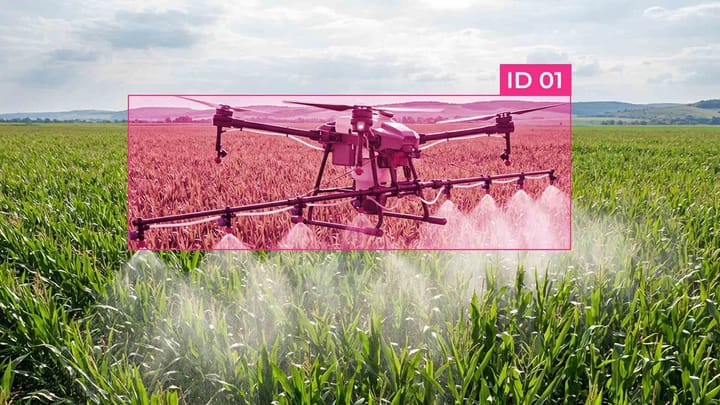Synthetic Data for AI in Compliance with GDPR

Traditional data processing methods struggle to balance utility with compliance, especially for sensitive records such as medical information. With mathematical structures like differential privacy, organizations can now define and guarantee levels of protection.
These solutions enable secure collaboration across borders using data masking techniques without compromising individual rights. As synthetic data generation methods evolve, they are changing how enterprises approach AI development in compliance with regulations such as GDPR. Strategic roadmaps support statistical value and eliminate the risks of re-identification.
Key Takeaways
- Advanced generation methods preserve the accuracy of the original dataset.
- Differential privacy systems provide mathematical proof of protection.
- Ensures secure exchange of medical and financial data between organizations.
- Reduces the cost of GDPR compliance in pilot implementations.
Definition of Synthetic Data and Its Applications
Synthetic data is artificially generated information that mimics the characteristics of real-world data sets, but does not contain any records collected in the real world. It is created using machine learning algorithms, simulations, or generative models to preserve the original data's patterns, statistical properties, and structure. The primary purpose of synthetic data is to be used safely in cases where working with real-world data sets is restricted due to confidentiality, ethical, or legal requirements. It trains artificial intelligence and analytical systems, tests software, simulates rare scenarios, and creates balanced samples to avoid bias in AI models.
Types and Methods of Synthetic Data Generation
Three approaches dominate this field:
- Rules-based systems that use predefined logic for simple simulations.
- Statistical models that reproduce the relationships between variables in financial data sets.
- Neural networks that generate complex medical records using deep learning.
The choice depends on the complexity of the use case and the security needs. Simple demographic predictions can use statistical methods, while drug development requires complex neural architectures.
Synthetic Data Benefits and Practices
Modern enterprises gain strategic advantages from artificial datasets, including synthetic patient records, that reflect real-world patterns.
- Privacy protection. Allows you to work with information without exposing sensitive data.
- Accessibility. Generate at any scale when real data is not enough.
- Sampling balance. Helps avoid data bias and creates balanced sets for training AI models.
- Rare scenario simulation. Generate situations that are difficult to replicate in real life.
- Cost and time savings. Eliminates the need for lengthy real-world data collection and preparation.
- Safe testing. Allows you to test algorithms and systems without risking people or the business.
Implementation practices
- Establishing validation checkpoints during generation workflows.
- Measuring utility using task-specific accuracy benchmarks.
- Conduct quarterly privacy audits using re-identification tests.
Hybrid approaches that combine neural networks with statistical adjustments improve quality. These methods support security guarantees and improve feature correlation in financial fraud detection systems.
Continuous monitoring ensures that artificial datasets evolve with changing regulations and business needs.
GDPR Compliance and the Role of Synthetic Data
Data protection laws are changing the way organizations approach AI innovation. Regulatory barriers block access to critical information for training AI models.
Legal Frameworks and Regulatory Standards
Europe's General Data Protection Regulation sets rules for processing personal information. Traditional anonymization methods fall short of these standards.
Differentially private synthetic methods provide mathematical proof of protection, the GDPR's requirement for privacy by design. This framework ensures that no individual can be re-identified when generating datasets from external sources.
Compliance Strategies for AI Applications
Implementation requires three actions:
- Establish clear documentation of generation methodologies.
- Perform regular re-identification risk assessments.
- Implement governance protocols for updating datasets.
With automated validation checks and standardized reporting templates, enterprises reduce compliance costs, provide flexibility for technical teams, and adhere to regulatory requirements.
Synthetic Data Generation Methods
Advances in machine learning have changed the way artificial data sets are created. Three approaches dominate technical implementations, each offering advantages for specific scenarios.
Generative adversarial networks
The GAN architecture consists of two neural networks, a generator and a discriminator, which are trained simultaneously in a competitive process. The generator creates new data, trying to reproduce the distribution of real examples, and the discriminator evaluates whether the data presented to it is real or synthetic. As a result of repeated training, the generator improves and creates more realistic samples that can mislead the discriminator. This approach is used to make synthetic images, audio, and texts, and to balance datasets in machine learning.
Variational autoencoders
Variational autoencoders combine the properties of classical autoencoders with the principles of probabilistic modeling. Their architecture consists of two main parts: an encoder and a decoder. The encoder compresses the input data into a compact representation, and instead of a fixed code, creates the parameters of the distribution from which the variable is selected. The decoder reconstructs the data from this latent space and generates new examples that have statistical similarity to the real ones. This approach allows you to reproduce the original data and create variations, making VAEs suitable for synthesizing images, texts, or audio.
Rule-based approaches and statistical models
In rule-based approaches, data is created according to algorithms that specify logic and constraints appropriate to the subject area. This approach provides high predictability and quality control, but can limit the diversity of the data. Statistical models are based on analyzing distributions and correlations in real data, after which these properties are used to generate synthetic examples. The use of Monte Carlo methods, regression models, or Markov processes allows you to obtain data that preserves the statistical characteristics of the original samples. This makes statistical models helpful in modeling complex systems where general patterns must be reproduced without describing every rule. As a result, both approaches provide transparency and control over the generation process.
Using Differential Privacy in AI Models
Differential privacy is an approach to data protection that allows you to extract useful analytical information from data sets without revealing information about specific individuals. Its principle is that a controlled level of random noise is added to the query results or generated data. This makes it impossible to determine whether a specific person's data is included in the sample.
Key characteristics:
- Guarantee of individual protection. The result of the analysis does not change depending on the presence or absence of a specific person's data.
- Random noise. Controlled noise is added to the data or query responses, hiding individual records.
- Balance of accuracy and confidentiality. The noise level is adjusted to ensure privacy without losing valuable data.
- Mathematical measurability. The degree of confidentiality is given by the parameter ε, which describes the risk of information leakage.
- Independence from external knowledge. If the attacker has additional databases or information, identification of the person remains impossible.
- Wide applicability. The method suits statistical analysis, machine learning, and big data processing in medicine, finance, telecommunications, and government services.
Integration of AI and Privacy Technologies
Integration of AI and privacy technologies combines big data analytics capabilities with privacy protection requirements. Machine learning systems predict behavior and optimize processes, but their effectiveness depends on access to sensitive information, such as medical records, financial transactions, or users' data. Using privacy technologies, differential privacy, federated learning, and synthetic data methods reduces the risk of information leakage. In such integration, data remains under the owners' control, and algorithms gain access to generalized or depersonalized representations. This ensures secure collaboration between organizations, the development of innovative medical solutions, the improvement of financial services, and the creation of reliable cybersecurity systems.
FAQ
How does synthetic data support GDPR compliance in AI systems?
Synthetic data allows AI models to be trained and tested without using real personal data, which minimizes the risk of personal identification. This ensures anonymity, reduces the need to process sensitive information, and facilitates compliance with data minimization principles.
What generation methods ensure the quality of artificial datasets?
Through generation methods that reproduce real data's statistical properties and structure, such as generative adversarial networks and variational autoencoders.
How do you test the effectiveness of privacy-preserving methods?
The effectiveness is tested by assessing the risk of data leakage through membership or attribute attacks, and controlling privacy parameters such as ε and δ in differential privacy.
Which industries benefit from artificial intelligence solutions?
In medicine, they help diagnose and predict diseases. In finance, they detect fraud and optimize investment decisions. They are also effective in manufacturing, transportation, and telecommunications.



Comments ()